Buyer Permissions
Using the Buyer Permissions feature of the procurement platform.
Overview
Buyer Permissions enable you to create granular rules controlling which products buyers can view, purchase, or purchase with approval.
Access: Navigate to Settings → Store → Buyer Permissions
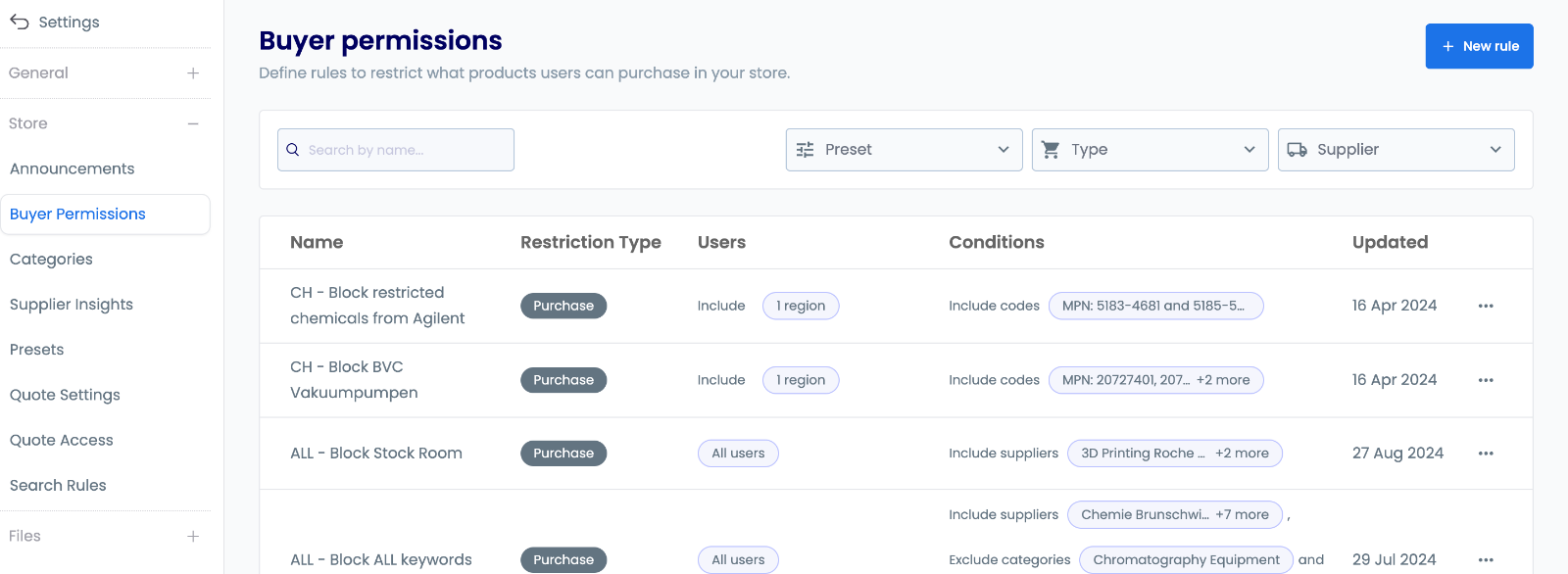
Creating Rules
To create a new rule:
- Click + New Rule
- Give the rule a name and description for internal reference
- Specify an error message to display to restricted shop users
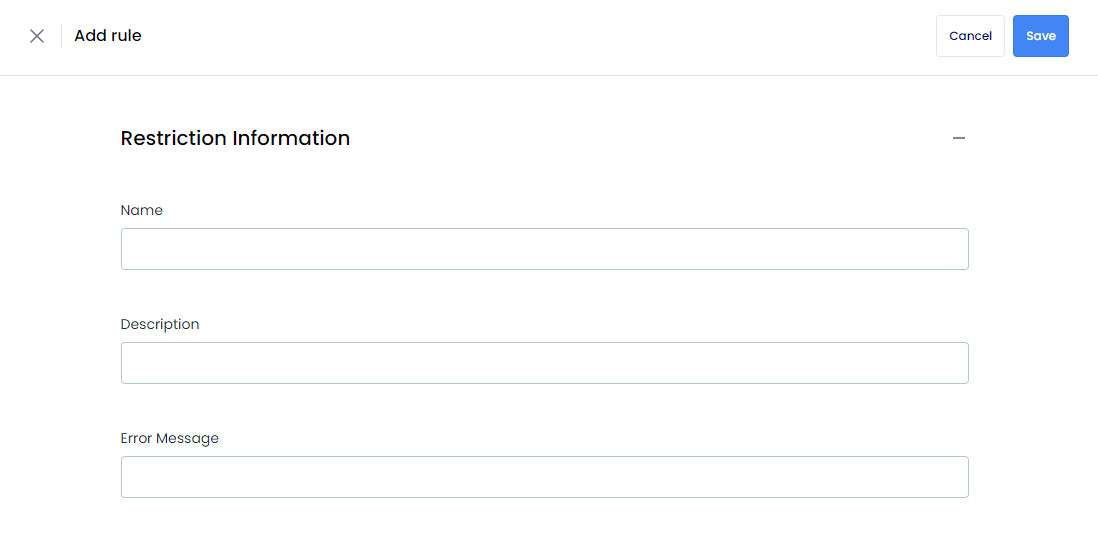
-
Select the restriction type:
- View - Prevents users from seeing the product
- Purchase - Prevents users from buying the product
- Require Approval - Requires users to submit a purchase request for approval
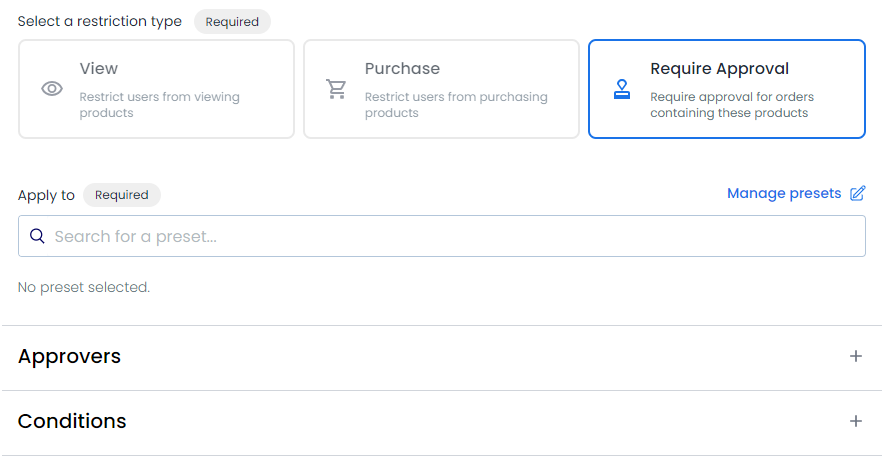
-
Select which users to apply the rule to by choosing a preset:
- Search for a preset and click it to select it
- Click Manage presets to create or edit existing presets
- Presets can also be managed from the Presets page under Settings
- For more information on presets, see the presets guide
-
If the Require Approval restriction type is selected:
- Search for and select Procurement users/groups that can act as Approvers
- Users/groups can be removed with the trash icon

-
Add conditions determining which products the rule applies to:
- Click Add Condition
- Select condition type: Products, Suppliers, Countries, Codes, Keywords, Services
- Based on type, search for and select or enter items to include or exclude
- Select All for conditionality to apply the condition to all matching products
- Use the trash icon to remove any already selected items
- Click Save Condition after finalizing the items for each condition
- Add multiple conditions as needed to fine-tune rule scope
- Click the pen icon to edit a condition, or the trash icon to remove a condition

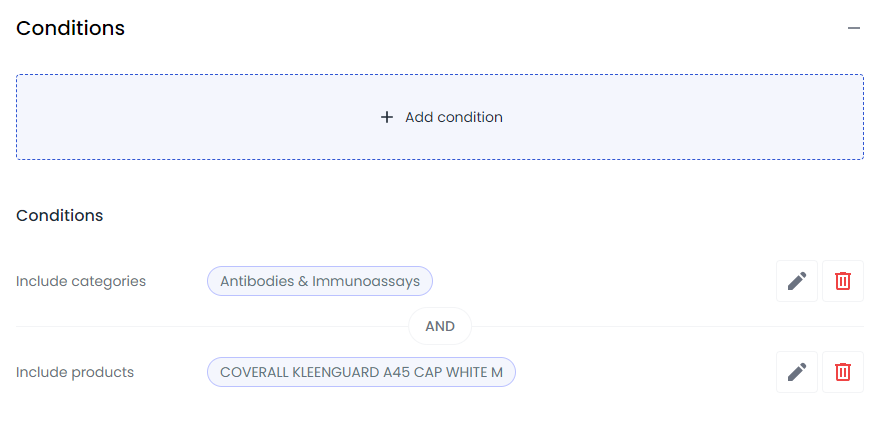
-
Review and click Save in the top-right to create the rule

Managing Rules
To manage existing rules on the Buyer Permissions page:
- Click the toggle in a row menu dropdown to disable or enable a rule
- Click Edit in a row menu dropdown or click on the table row itself to modify a rule
- Click Delete in a row menu dropdown to permanently delete a rule
- Click + New Rule to create additional rules
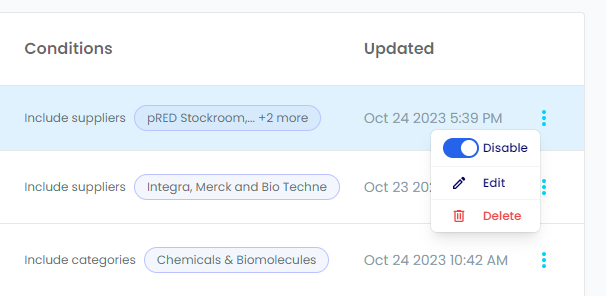
Rule Conditions
Rule conditions allow restricting products by:
- Products - Search by product name, SKU, or MPN to include or exclude specific products
- Suppliers - Search for and select suppliers to include/exclude their products
- Countries - Select countries to include or exclude products from shipping to
- Codes - Select a code type (CAS, EAN, GTIN, etc) and input codes to match against
- Keywords - Input keywords to match against product data like titles, descriptions, etc.
- Services - Select services to include or exclude
- AI Rules (purchase type only) - Input custom text rules for AI to warn users when adding an item to their basket
Keywords
When building a Keywords condition, keywords can be manually created by entering the keyword and clicking Add.
When adding keywords, an action type must be selected:
- Contains - If the product name or description contains this keyword, even within a bigger word
- Exact match - If the product name or description contains this keyword by itself (not part of a bigger word)
- Starts with - If a word in the product name or description starts with this keyword
- Ends with - If a word in the product name or description ends with this keyword
Keywords can also be imported in bulk using a CSV file:
- Click Download Template to get the CSV template
- The template has two columns:
KeywordandActions - Actions should be one of:
contains,contains_exact,starts_with,ends_with - Click Import to upload the file
- View all keywords in the Selected keywords area
- Click Export to download the current keyword list
Keyword based restrictions only apply to the English version of the product name.
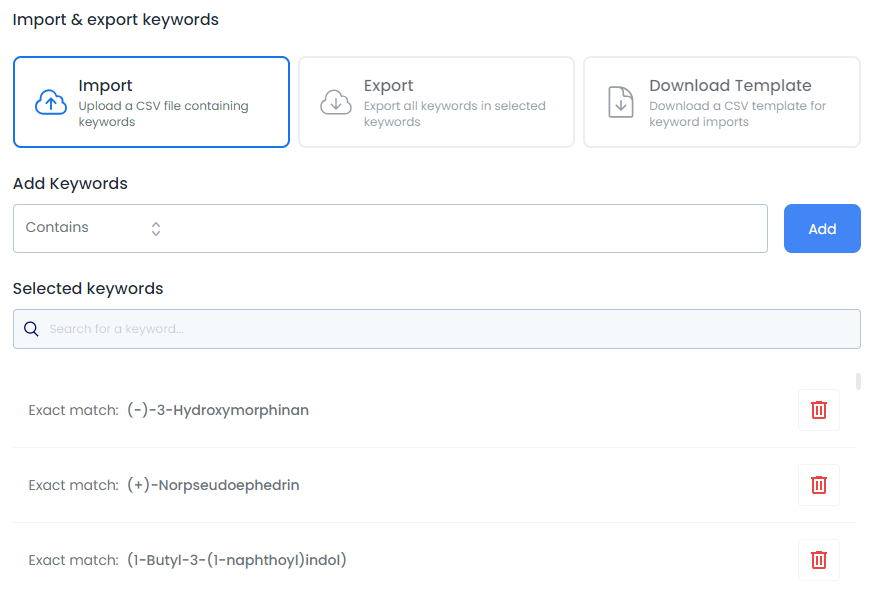

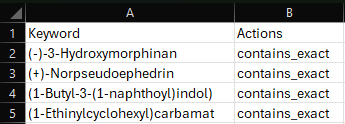
Remember that the Save Condition button must be clicked before saving the overall rule.


AI Rules
The AI condition can only be selected when the buyer permission rule type is Purchase.
To add AI rules:
- Enter the rule in the Add AI rule field and click Add
- Add additional rules by repeating the process
- Remove rules by clicking the bin icon
- Click Save Condition to add the condition
When a user triggers an AI condition, they receive a warning message when adding items to their basket but can still proceed with the order.
Handle AI rules with caution. For example, a rule such as "Users can't purchase chemicals" may also warn users for certain products made of chemicals, unless an additional rule of "Users can purchase products made of chemicals" is added as well.
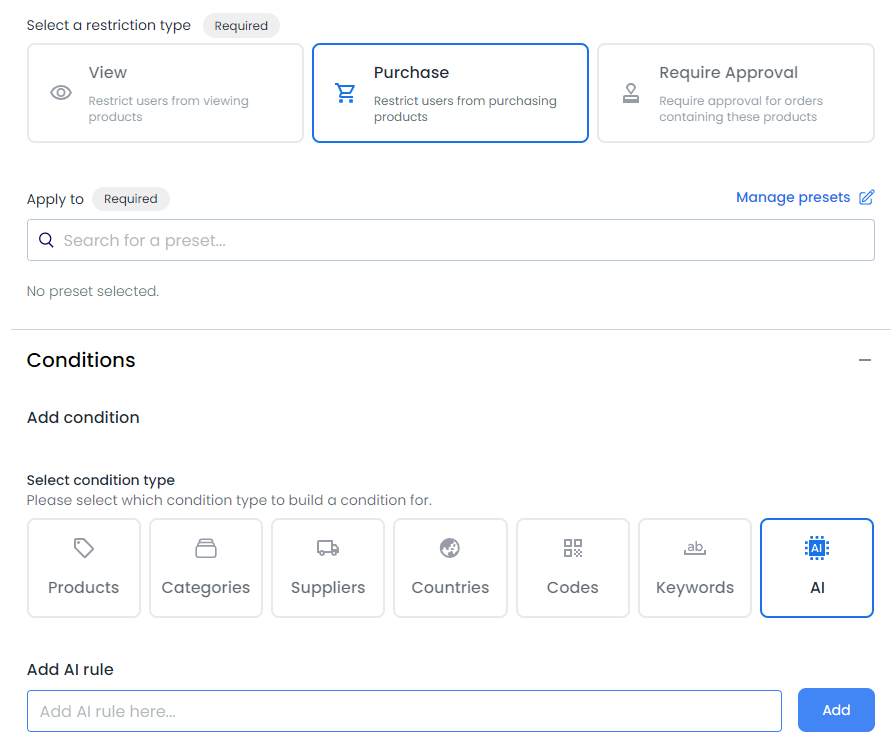

Multiple Conditions
Multiple conditions can be added to a single rule to narrowly target specific products.
View restriction type: Uses OR logic - any product meeting one or more conditions will be affected.

Purchase and Require Approval restriction types: Use AND logic - any product meeting all conditions will be affected.

Interactive Tutorial
A step-by-step tutorial demonstrating how to create and manage buyer permission rules.